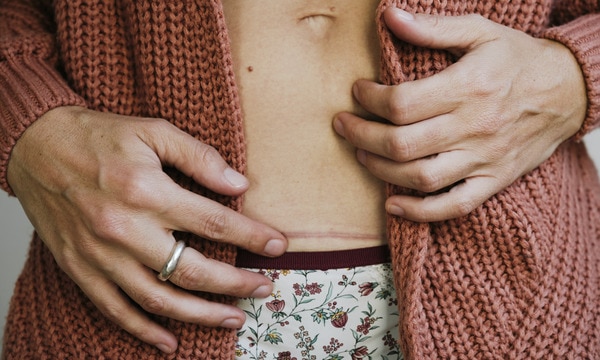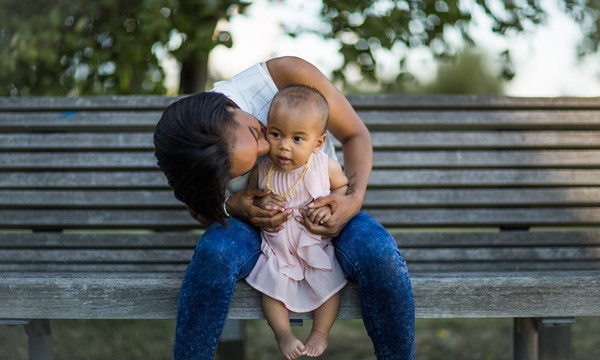
How does your vagina change after giving birth?

Your body may feel and look different after giving birth to a baby…
So, what happens to your V-Zone and vagina after birth?
Your vagina may feel a little wider
Your vagina might feel drier
Your vulva might be sore
What will your postpartum belly and body look like?
It’s not just your V-Zone (the vagina, vulva and V-shaped front you can see) that changes after giving birth. Your entire body has to transition from growing new life to nurturing it outside of your body. Here’s a couple of completely natural changes you might notice in the mirror:
Your stomach after birth
A few stretch marks after pregnancy
Stretch marks appear when the skin is stretching and the middle layer of your skin becomes broken in places. They can be pink, red, brown, black, silver or even purple, depending on your skin type, and appear on your belly, upper thighs and breasts. It happens to 8 in 10 pregnant women [5], so you’re not alone. They may gradually fade to become paler, and become less noticeable as time goes on. Think of stretch marks as beautiful reminders of you of how strong and worthy you are.
Medical disclaimer
The medical information in this article is provided as an information resource only, and is not to be used or relied on for any diagnostic or treatment purposes. Please consult your doctor for guidance about a specific medical condition.
[References]
note-1[1] https://www.nct.org.uk/labour-birth/you-after-birth/episiotomy-during-childbirth
note-2[2] https://www.rcog.org.uk/en/patients/tears/tears-childbirth/
note-3[3] https://www.nhs.uk/live-well/sexual-health/vagina-changes-after-childbirth/
note-4[4] https://www.nhs.uk/conditions/loss-of-libido/
note-5[5] https://www.nhs.uk/conditions/pregnancy-and-baby/stretch-marks-pregnant/

